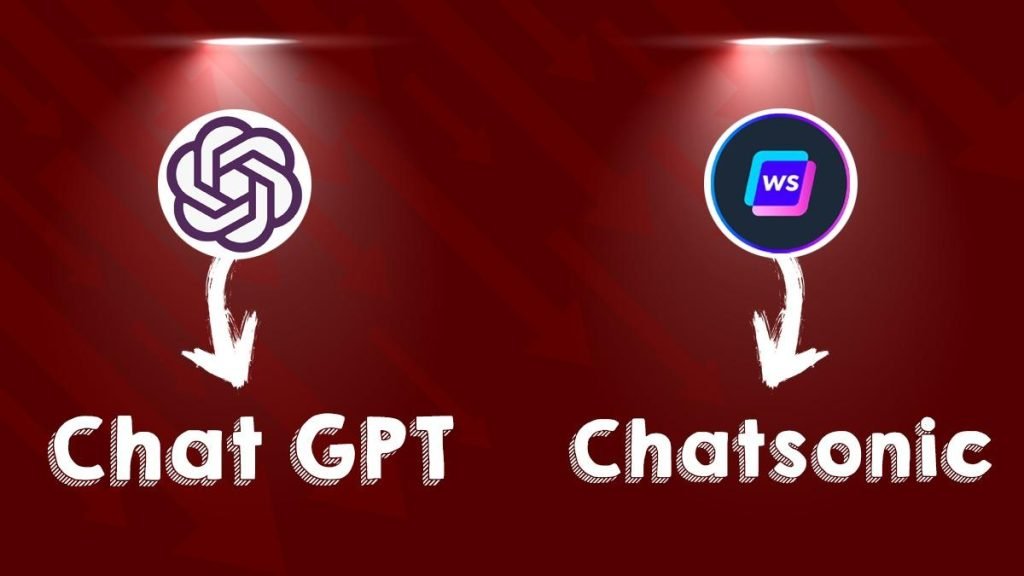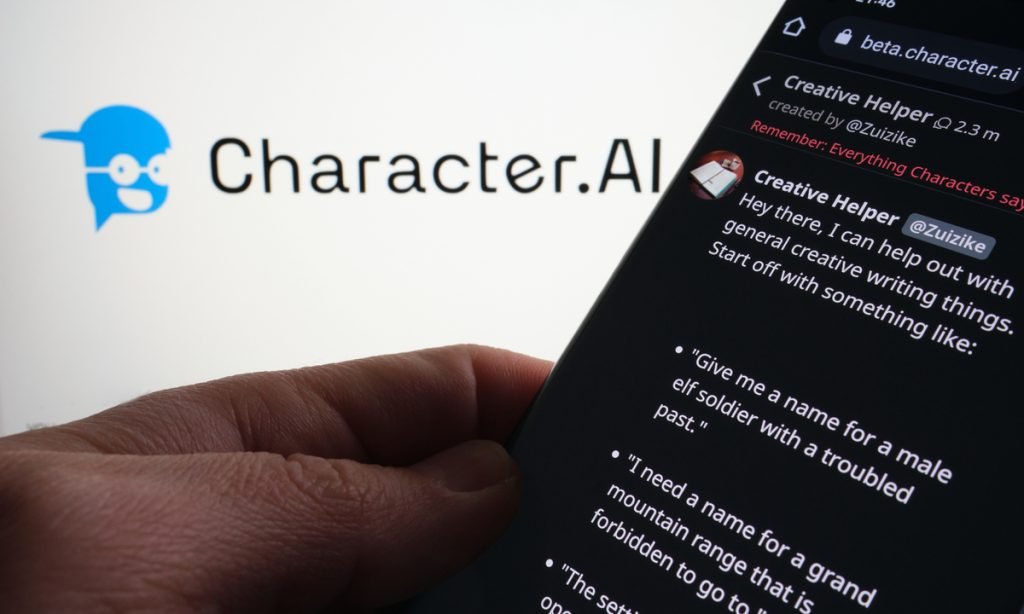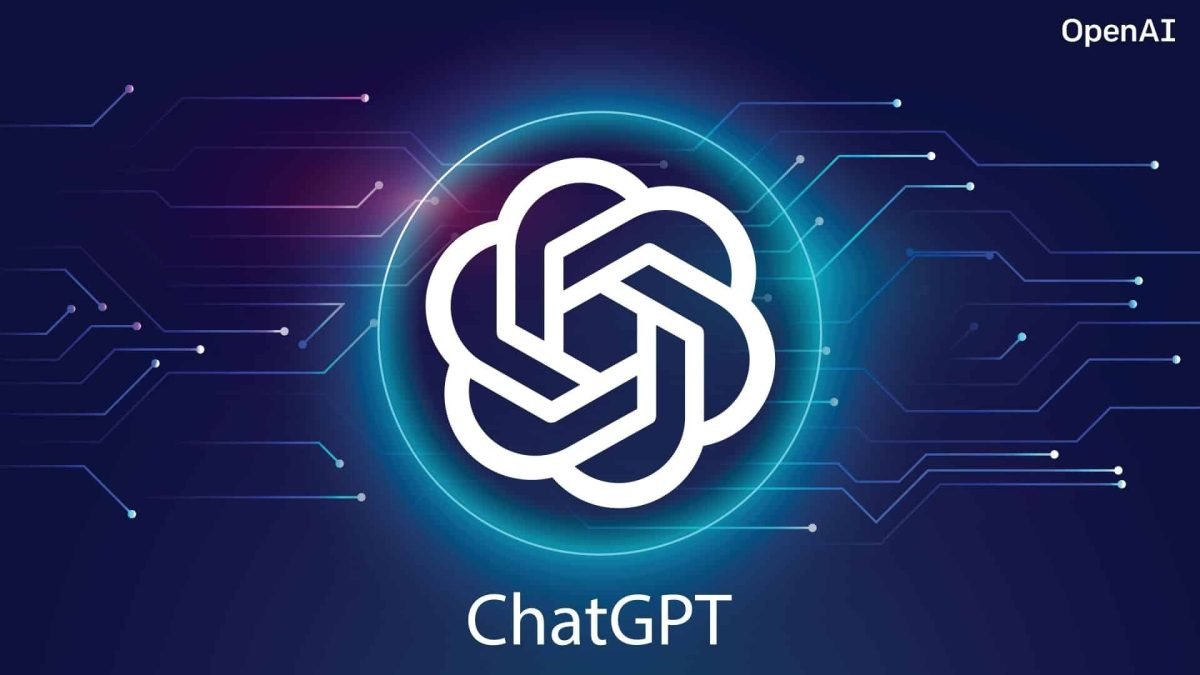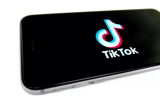Since ChatGPT’s debut, SEO experts and creators all around the world have been testing the AI chatbot to see how it may make their lives easier. The public has put ChatGPT to a lot of use automating activities, producing content, and coming up with solutions for specific projects.
OpenAI chatgpt is not the only chatbot available, though. Bard, Bing chatgpt, and more ChatGPT substitutes are currently available on the AI market. Up to this point, ChatGPT app has dominated the news, but you can also explore some other ChatPGT options.
What is ChatGPT?
Natural language processing is used by ChatGPT, an AI chatbot, to produce a conversational discourse that sounds human. The language model can answer questions and create a variety of written content, such as articles, social media posts, essays, code, and emails.
Who created ChatGPT?
In November 2022, ChatGPT was produced and released by OpenAI, a business that does AI research. Elon Musk and Sam Altman were among the businessmen and professors who created it in 2015. Many investors support OpenAI, with Microsoft being the most known. The AI text-to-art generator Dall-E was also developed by OpenAI.
How does ChatGPT work?
Through its Generative Pre-trained Transformer, ChatGPT evaluates data sequences to identify patterns. The third version of Generative Pre-trained Transformer, a neural network machine learning model, and ChatGPT all make use of the GPT-3 language model. To create a response, the transformer consults a sizable amount of data.
Through transformer neural networks, ai ChatGPT uses deep learning, a branch of machine learning, to create text that resembles human speech. Based on the regular sequence of its training data, the transformer foresees text, including the next word, sentence, or paragraph.
Training starts with general data and progresses to data that is more and more specialized for a given purpose. ChatGPT was initially trained with online text to learn human language, and then it was taught the fundamentals of conversation using transcripts.
Conversations are provided by human trainers, who grade the responses. The best answers are chosen with the aid of these incentive models. Users can give the chatbot feedback by clicking the “thumbs up” or “thumbs down” icons next to each response to help it learn. To enhance and perfect the next dialogue, users can also provide more written input.
How to Set Up ChatGPT?
Creating an account on the OpenAI website is required before using ChatGPT. You simply need to provide certain information, such as your name, email address, and phone number. This process is really simple. Let’s look at the complete, step-by-step procedure for creating a new OpenAI account without further ado.
1. Navigate to OpenAI’s ChatGPT
To sign in or register for a new account, go to the ChatGPT website and click Try ChatGPT. Additionally, you can learn about this tool’s training methodology, limitations, and use case illustrations.
2. Enter Your Email Address and Password
Enter your email address and password to create a new account, then click Continue.
3. Confirm Your Email and Phone Number
- A verification request will then be sent to your email address. Click Verify email address after opening it.
- You must provide your name and phone number on the account onboarding page for OpenAI after clicking the button. Then, OpenAI will use SMS or WhatsApp to deliver a verification code to your phone number.
4. Fill In Your Questions, Hit Submit, and Wait for a Response
- The AI model can be used by putting a question or prompt in the AI chat box once the onboarding procedure is complete. Press enter, then wait for the chatgpt chatbot to answer your question.
- Depending on how many people are currently using the service, the response time will vary.
- By selecting the thumbs up or down buttons, users can rate the response, assisting the AI in learning the optimal answer to the inquiry.
How to Use ChatGPT to Create a WordPress Website?
ChatGPT can assist with a variety of activities in a web development project as a language model. A full-stack developer, for instance, may employ it to:
- To assist with the creation of a certain capability or feature, create code examples and snippets.
- Reply to technical questions about the website development project, such as by outlining recommended practices or a specific programming approach.
- Learn about tools, libraries, and other resources that can be used to speed up the development process and increase productivity.
What kinds of questions can users ask ChatGPT?
Users can ask a wide range of questions on ChatGPT login, from straightforward inquiries to more difficult ones like, “What is the meaning of life?” Alternatively, “In what year did New York become a state?” ChatGPT is skilled in STEM fields and can troubleshoot or write code. The kinds of questions that can be posed to ChatGPT are not restricted. ChatGPT, on the other hand, only uses data up to the year 2021, therefore it does not know events or data after that year. Users can also request more information or request that it try again while producing text because it is a conversational chatbot.
What methods are people using ChatGPT?
ChatGPT is adaptable and can be used for purposes other than interhuman communication.
People have done the following things with ChatGPT:
- Code computer programs.
- Compose music.
- Draft emails.
- Summarize articles, podcasts or presentations.
- Script social media posts.
- Create a title for an article.
- Solve math problems.
- Discover keywords for search engine optimization.
- Create articles, blog posts and quizzes for websites.
- Reword existing content for a different medium, such as a presentation transcript for a blog post.
- Formulate product descriptions.
- Play games.
- Assist with job searches, including writing resumes and cover letters.
- Ask trivia questions.
- Describe complex topics more simply.
ChatGPT can remember different questions, which allows the discussion to flow more naturally than other chatbots can.
What are ChatGPT’s limitations? How precise is it?
The following are a few of ChatGPT’s limitations:
- It doesn’t fully understand how intricate human language is. Input-based word generation is how ChatGPT has been trained. As a result, responses may come off as superficial and lacking in profundity.
- Lack of knowledge regarding data and events coming beyond 2021. The 2021 content is the last of the training data. Based on the data that ChatGPT 4 uses, it may provide inaccurate information. ChatGPT may potentially provide an erroneous response if it does not fully comprehend the query. As ChatGPT is still being trained, providing comments when an answer is erroneous is advised.
- Responses may come off to be fake and mechanical. ChatGPT may misuse terms like the or and since it anticipates the next word. To make text flow more naturally and resemble human writing, people still need to examine and modify it.
- It has a summary but no source citations. Insight or analysis of any data or statistics is not provided by ChatGPT. There may be several statistics provided by ChatGPT, but there isn’t much explanation of what these numbers imply or how they apply to the subject.
- It is unable to comprehend irony and sarcasm. Text data collection serves as the foundation for ChatGPT.
- It may be unable to shift the focus from the incorrect portion of a query. For instance, ChatGPT will respond positively if you question, “Does a horse make a good pet based on its size?” Afterward, enquire, “What about a cat?” Instead of providing information regarding keeping the animal as a pet, ChatGPT may only focus on the animal’s size. ChatGPT cannot shift its answer to address several questions in one response since it is not divergent.
Plagiarism and deceitful use:
Due to ChatGPT’s human-like qualities, it may be used illicitly for purposes like cheating, impersonation, or distributing false information. Concerns regarding students utilizing ChatGPT to cheat, plagiarise, and compose papers were raised by several educators. When CNET employed ChatGPT to produce articles that were rife with mistakes, it made headlines.
An AI text classifier to differentiate between human and AI text was announced to aid in the prevention of cheating and plagiarism. However, OpenAI removed the tool after six months of operation because of a “low rate of accuracy.”
Online resources like Copyleaks and Writing.com can be used to determine if a piece of text was likely created by a human or an AI. Longer texts will get a watermark from OpenAI to indicate that it is AI-generated content.
ChatGPT can write code, which makes cybersecurity a challenge. ChatGPT can be used by threat actors to help them construct malware. The request was stopped in an upgrade to address malware creation, but threat actors may still find ways to get beyond OpenAI’s security protocol.
By training to mimic someone’s writing and language style, ChatGPT can also impersonate that individual. A trustworthy individual can thus be impersonated by the chatbot to gather private data or spread false information.
Bias in training data:
The bias in training data using ChatGPT is one of the main ethical issues. The model’s output will reveal any bias present in the data it uses. The language that may be rude or discriminatory is not understood by ChatGPT either. Although the data must be checked to prevent bias from being maintained, adding diverse and representative material can aid in bias management for reliable results.
Replacing jobs and human interaction:
As technology develops, ChatGPT may automate some human-run functions including data entry and processing, customer support, and translation assistance. People are concerned that ChatGPT and AI could replace their jobs, therefore it’s crucial to take into account how these technologies will affect them, as well as how they can be used to support existing occupations and create new ones.
For instance, lawyers might use ChatGPT to write contracts or agreements and summarise case notes. Additionally, copywriters might use ChatGPT for ideas for headlines and article outlines.
Privacy issues:
ChatGPT relies on text-based input, which means it could reveal private information. By gathering information from a prompt and connecting it to the user’s phone number and email, the model’s output can also track and profile people. The information is then kept on file indefinitely.
Is ChatGPT free?
Through the OpenAI website, ChatGPT is freely accessible. Users must create a free OpenAI account first. Additionally, ChatGPT Plus can be upgraded for limitless access, quicker responses, and no blackout windows. In addition, ChatGPT Plus offers $20/monthly subscription access to new features before anyone else.
Limitations apply without a subscription. The most notable restriction of the free version is the inability to access ChatGPT detector when it is full. Unlimited access is provided by the “Plus” membership to prevent capacity blackouts.
What are the alternatives to ChatGPT?
Due to capacity constraints, ChatGPT is frequently unavailable as a result of its popularity. In response to ChatGPT, Google introduced Bard, which will use a Google search to gather information directly from the internet.
Bing now has a chat mode for users thanks to Microsoft’s addition of ChatGPT technology. Because the training is current and doesn’t stop with 2021 data and events, the ChatGPT functionality in Bing isn’t as constrained.
Why Would You Use An Alternative To ChatGPT?
Gaining access to more advanced features is one of the key reasons for choosing a ChatGPT substitute. For instance, many of the substitutes provide speech recognition and sentiment analysis features that might assist organizations in having tailored discussions with clients. This enables businesses to provide a more engaging experience by customizing their responses based on client feedback.
Support for many languages and interfaces with other customer service systems are two additional features of some of the alternatives. A ChatGPT replacement may be cheaper as well, which is even another benefit. Although ChatGPT has a wide range of functionality, many organizations find the pricing to be prohibitive for their requirements.
Alternatives frequently provide more adaptable price structures and may even provide free programs for small organizations. The ease of usage varies among the ChatGPT substitutes. Without any prior coding knowledge, many of them have straightforward user interfaces that make it simple to get started right away. By enabling groups to swiftly set up their virtual agent without hiring a developer, this can save them time and money.
Top 11 Best ChatGPT Alternatives in 2023 (Free and Paid):
If you want to get a head start on your projects, here are the top 11 ChatGPT alternatives:
1. Google Bard

Google’s answer to ChatGPT is Google Bard. LAMDA (Language Model for Dialogue Applications), a tool developed by Google, powers this experimental conversational AI service. The straightforward explanation is that Bard is an additional AI chatbot similar to ChatGPT plugins.
LAMDA has been fed trillions of words, claims Google’s FAQ page on Bard. This makes it more competent to plan responses and carry on a discussion. However, Bard is not all-knowing like ChatGPT. In reality, a Google Bard demo that caused the company’s chatgpt stock to lose billions of dollars overnight showed off Bard’s enormous ability for making mistakes.
2. Microsoft Bing Chat

This simply serves to demonstrate that Google is not the only company attempting to break into the AI business. Additionally, Microsoft has unveiled an updated version of Bing that makes use of an upgraded ChatGPT. Microsoft asserts that this new version is even faster and more accurate than the previous one.
3. Jasper.ai

Jasper.ai is a cloud-based conversational AI platform with strong natural language understanding (NLU) and dialogue management features. Similar to ChatGPT, it can provide writing inspiration, assistance with article creation, and help marketing teams create compelling ad language and visuals. For jobs relating to customer support, sales, and marketing, Jasper.ai uses Open’s GPT-3.5 together with internal NLU models.
4. Claude

Recently, Anthropic released Claude, a next-generation AI assistant that can handle a variety of conversational and text-processing activities. Based on Anthropic’s research into training AI systems to be helpful, trustworthy, and harmless, Claude was developed.
Claude can support you with use cases including a summary, searching, writing creatively and together answering questions, coding, and more. It is accessible through their developer console’s chat interface and API.
Claude is available from Anthropic in two different iterations: Claude and Claude Instant, with the latter being a lighter, more affordable, and quicker choice. The business has joint ventures with several companies, such as Quora, Juni Learning, Notion, and DuckDuckGo.
5. ChatSonic

According to its page, it is powered by Google Search, which means you might be able to use it to instantly generate material that contains accurate, true information about hot issues and current events.
Since ChatGPT is based on Open AI’s GPT-3 language model, which has only been trained on information data sets up until 2021, I say “claimed” rather than “developed.” Unless ChatSonic has invented a brand-new process that processes current information inside its program, it appears that promises like this regarding the capabilities of such products may be false.
If not, it vastly understates the capabilities of the program. The limitations of the original GPT-3 language model may have been solved by this application, though I haven’t tried it.
6. NeevaAI

NeevaAI is a proprietary search engine that combines ChatGPT and other particular language models to produce a distinctive experience as another ChatGPT substitute. The accuracy and precision given by the Neeva search engine and the use of current data also improve the experience.
To produce a detailed response with appended sources that are related to the project, this system can search through millions of pages. NeevaAI, according to the business, ensures an ad- and tracker-free browsing experience. Additionally, references are included in the search results so you can confirm the information’s source.
7. YouChat

YouChat, an AI search assistant from You.com, enables users to have discussions that are similar to those they would have with a human directly inside of search results. YouChat is an intelligent (AI) assistant similar to ChatGPT that delivers real-time data and references sources to boost accuracy and relevance. Users of YouChat can learn new languages, generate content in any language, apply logical thinking to solve problems, and ask complicated questions.
8. Perplexity

Users can get answers to questions about any subject using Perplexity AI’s conversational search engine. Unlike ChatGP Tapi, it leverages OpenAI’s GPT-3.5 API and replies by citing web pages and sources. It also provides users with follow-up questions so they can delve deeper into a specific subject.
9. Character.AI

The “personas feature” that ChatSonic has is exactly that—a feature. To provide chat-like experiences with AI characters, Character.AI completely focuses on AI personalities. Mario to Tony Stark are just a few of the characters you can pick from to speak with various types of people.
On a completely different level, this is comparable to the tone of voice feature provided by Jasper.ai. Additionally, it serves more as an amusement than as actual automation. This is something you may be interested in, though, if you’re seeking an AI experience that differs from what’s already available on the market.
10. Elicit

A platform called Elicit describes itself as an AI research assistant, which means it can aid with research and other duties. Its main capability is a function it refers to as Literature Review. This works by having Elicit provide summaries of pertinent research papers and other documents connected to your question when you submit a query.
The reliability and accuracy of the source are given priority it is quite effective at producing helpful summaries of information. You can easily obtain a sizable publication collection that is pertinent to your inquiry using Elicit. It can also answer questions for research. Despite being a great tool for finishing research, there are a few qualities that make other ChatGPT options preferable for more recent and thorough studies.
11. Learnt.ai

The purpose of Learnt.ai was to serve the requirements of education professionals. It may produce text with the appearance of a human using the GPT language generation model for learning objectives, icebreakers, assessment questions, and other purposes.
The laborious process of manually developing lesson plans, learning objectives, and test questions can be made easier with its assistance. You can save a lot of time and effort by automating these operations.
Frequently Asked Questions (FAQs):
Q: What are AI Chatbots?
Ans: For those who don’t know, AI chatbots are computer programs and mobile applications that mimic human dialogue. To put it even more simply, AI chatbots give users the impression that they are conversing with a human being rather than a machine. The number of AI chatbots has greatly expanded since ChatGPT’s emergence. AI chatbots are capable of a wide range of tasks in addition to speaking, such as producing essays, performing mathematical operations, and more. As stated in the article, several of the ChatGPT alternatives listed below serve as complete AI chatbots. Therefore, you are free to engage in dialogue with these bots and expect them to respond in kind.
Q: Is There Any Alternative to ChatGPT?
Ans: In 2023, there will be many ChatGPT alternatives. You might have inferred from the list above that an AI chatbot will meet your needs regardless of the industry you work in. There is something for everyone, whether it’s a ChatGPT substitute for programmers, authors, or even people who only do simple search engine searches. While there are many ChatGPT alternatives.
Q: Is There a Free Version of ChatGPT?
Ans: Anyone can use and experiment with ChatGPT for free. Users who want to test out the new GPT-4 model must, however, pay $20 per month to gain access. They will receive a better language model as well as no downtime from this. Check out the steps for gaining access to GPT-4 immediately to get going.
Q: Is There Any Other Tool like ChatGPT?
Ans: You can test a lot of tools, such as ChatGPT, as was previously suggested. Check out Chatsonic and Jasper Chat from the list above and start conversing with them if you’re a user who is only interested in an AI chatbot like ChatGPT.
Q: What Is Google Equivalent of ChatGPT?
Ans: Google has previously worked on a variety of different language models. Models like BERT, MUM, and LaMDA are on the list. However, Bard is Google’s most recent and appropriate replacement for ChatGPT download. Google Bard is an experimental conversational AI service, as was already mentioned. Do not forget that Bard is based on a simplified form of LaMDA rather than being a language model. Even ChatGPT is unable to connect to the Internet, but Google Bard can. You will have to wait to use this is chatgpt down contrast because it isn’t yet completely available.
Conclusion:
Today, it is possible to design websites that use artificial intelligence thanks to considerable advancements in the field. By producing the necessary code snippets and making suggestions to quicken the development process, ChatGPT can assist in the creation of websites.
Since the AI model is also easily understandable by everyone, even complete beginners should consider it. However, ChatGPT has several limitations, as do other AI-powered solutions, such as AI website builders. For instance, they might reply to damaging orders or give you a fake answer to your question. Thus, even though ChatGPT might save you time, human editing is still necessary when creating websites utilizing AI.







